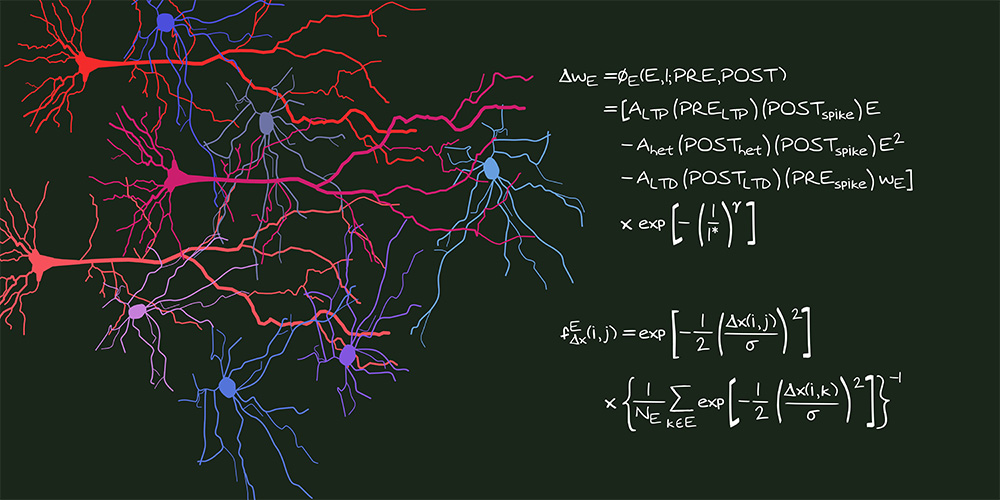Neighboring synapses shape learning and memory
A researcher at the University of Basel, in collaboration with a colleague in Austria, has developed a new model that provides a holistic view on how our brain manages to learn quickly and forms stable, long-lasting memories. Their study sheds light on the crucial role of interactions among neighboring contact sites of nerve cells for brain plasticity – the brain’s ability to adapt to new experiences.
21 March 2024 | Katrin Bühler
In 1949, the Canadian psychologist Donald O. Hebb described that connections between neurons become stronger when the neurons are active at the same time and that strengthened connections facilitate signal transmission. The ability of our brain to modify the connections between neurons is fundamental for learning and memory.
“It has long been assumed that these adaptations occur mostly on a one-on-one basis at specific synapses, the contact sites between two neurons”, explains Dr. Everton Agnes from the Biozentrum, University of Basel. “Interestingly, synapses that undergo changes also affect multiple neighboring synapses.” As these complex synaptic interactions are difficult to investigate experimentally, Agnes and his colleague Prof. Tim Vogels from the Institute of Science and Technology Austria have built a theoretical model to disentangle this phenomenon, also known as co-dependency. Their work has recently been published in “Nature Neuroscience”.
Synaptic plasticity: The brain’s method for learning
We all know it from our school time: When repeatedly learning new vocabulary, you can recall them better. This is because the neurons involved in processing this information form stronger connections with each other over time. These changes of synaptic connections – either strengthening or weakening – is known as synaptic plasticity. In this way, the brain continually updates its neuronal network to store new or remove irrelevant information – the basis for learning and memory.
The neurons are mostly connected by excitatory and inhibitory synapses. Whereas the excitatory synapses transmit a signal, the inhibitory reduce signal transmission. “The different types of synapses don’t just work independently, instead neighboring synapses affect each other, thus shaping the strength and stability of neuronal connections”, says Agnes. “With our model, we could reveal for example that interactions between neighboring excitatory synapses determine the strength of the connections, linked to how memories are encoded.”
Complementary, inhibitory synapses account for the long-lasting stability of excitatory synaptic modifications, providing the necessary mechanism for one-shot learning, when memories are learned after a single exposure.
Holistic view on neuronal network dynamics
The fine-tuned interplay between neighboring synapses is crucial for rapid learning as well as the formation of long-lasting memories. “By integrating a large set of rules concerning synaptic co-dependency into our network model, we provide a more holistic view on the mechanisms underlying brain plasticity”, emphasizes Agnes. The study highlights the importance of neighborly interactions and provides novel insights into the dynamics and optimization of neural networks in the brain at the microscale.
Original publication
Everton J. Agnes and Tim P. Vogels
Co-dependent excitatory and inhibitory plasticity accounts for quick, stable and long-lasting memories in biological networks
Nature Neuroscience (2024), doi: 10.1038/s41593-024-01597-4


